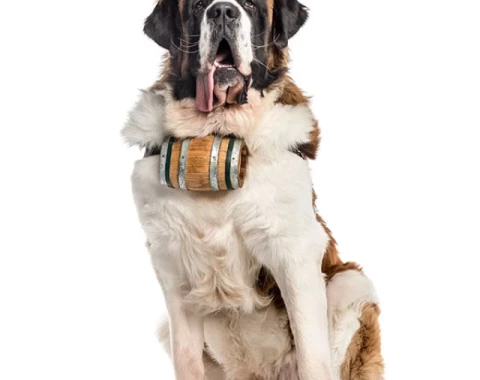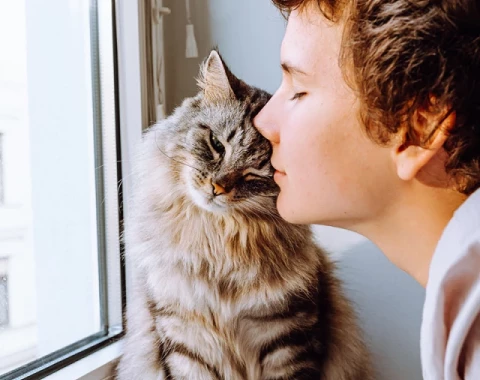Great Dane
2023-08-09
Собаки

The Great Dane breed, also known as the Deutsche Dogge, has a long and rich history dating back hundreds of years. Here is a brief history of this impressive breed:
The origins of the Great Dane date back to ancient times, when large dogs were used in various roles, such as fighting dogs, guard dogs and hunting dogs. Their ancestors may have come from large Molossians that lived in various parts of the world. During the Middle Ages, Great Danes were popular in Germany and other European countries. They were used as guard dogs that protected property and endangered herds from predators.
Great Danes were also used in hunting, especially for hunting wild boars and bears. Their strong build and courage made them excellent helpers in such tasks.
Over time, the role of Great Danes has evolved. Their abilities in protection and guarding, as well as as loyal companions for families, began to be appreciated.
It was during the reign of Grand Elector Frederick William (1620-1688) in Brandenburg (now part of Germany) that Great Danes became a particularly valued breed. The Elector was fascinated by these dogs and started breeding them in his manors.
In the 19th century, there was an increase in interest in Great Danes as guard and protective dogs, especially among the German aristocracy. During this period, efforts were also made to unify the breed standard and preserve its characteristic features. As the years have passed and society has changed, Great Danes have undergone a transformation from guard dogs to more typical family companions. Their powerful and friendly nature made them popular pet dogs.
Today, Great Danes are valued sociable and guard dogs, valued for their loyalty, courage and love of family. They are also present in the exhibition and sports environment. This breed has retained its impressive appearance and characteristics that attract many dog lovers around the world.
Breeding a Great Dane is a challenging endeavor as it is a large and imposing breed of dog.
Due to their impressive size, Great Danes need a lot of space to move around. A suitable garden or yard secured with a fence is important to provide them with the opportunity to run and play outdoors. Even though Great Danes are relatively calm at home, they still need regular physical activity. Long walks, games and time spent outdoors are essential to maintaining their health and well-being.
Great Danes are dogs that prefer to be close to their family. These are not dogs that should be outside all the time. They should have access to warm and dry shelter, especially in the colder months.
Proper socialization is extremely important for Great Danes, especially at a young age. This helps prevent aggressive or excessively distrustful behavior towards strangers. Taking them on walks in a variety of environments and introducing them to a variety of people and animals is key.
Great Danes are prone to skeletal and joint problems, so it is important to provide them with an appropriate, balanced diet to support their health. Consultation with a veterinarian regarding nutrition is recommended. The Great Dane's coat is short, but still requires regular brushing to keep it clean and healthy. Their skin is delicate, so you need to take care of it to avoid irritation. Due to the potential health problems associated with the breed, regular visits to the vet are important to monitor their health and prevent potential diseases.
Great Danes are intelligent, but also determined. Proper training that uses positive methods is key to ensuring they behave well and follow directions.
Breeding a Great Dane requires commitment, time and attention. This is a dog that can be a great companion, but needs proper care and conditions to develop as a healthy and balanced family member.
The origins of the Great Dane date back to ancient times, when large dogs were used in various roles, such as fighting dogs, guard dogs and hunting dogs. Their ancestors may have come from large Molossians that lived in various parts of the world. During the Middle Ages, Great Danes were popular in Germany and other European countries. They were used as guard dogs that protected property and endangered herds from predators.
Great Danes were also used in hunting, especially for hunting wild boars and bears. Their strong build and courage made them excellent helpers in such tasks.
Over time, the role of Great Danes has evolved. Their abilities in protection and guarding, as well as as loyal companions for families, began to be appreciated.
It was during the reign of Grand Elector Frederick William (1620-1688) in Brandenburg (now part of Germany) that Great Danes became a particularly valued breed. The Elector was fascinated by these dogs and started breeding them in his manors.
In the 19th century, there was an increase in interest in Great Danes as guard and protective dogs, especially among the German aristocracy. During this period, efforts were also made to unify the breed standard and preserve its characteristic features. As the years have passed and society has changed, Great Danes have undergone a transformation from guard dogs to more typical family companions. Their powerful and friendly nature made them popular pet dogs.
Today, Great Danes are valued sociable and guard dogs, valued for their loyalty, courage and love of family. They are also present in the exhibition and sports environment. This breed has retained its impressive appearance and characteristics that attract many dog lovers around the world.
Breeding a Great Dane is a challenging endeavor as it is a large and imposing breed of dog.
Due to their impressive size, Great Danes need a lot of space to move around. A suitable garden or yard secured with a fence is important to provide them with the opportunity to run and play outdoors. Even though Great Danes are relatively calm at home, they still need regular physical activity. Long walks, games and time spent outdoors are essential to maintaining their health and well-being.
Great Danes are dogs that prefer to be close to their family. These are not dogs that should be outside all the time. They should have access to warm and dry shelter, especially in the colder months.
Proper socialization is extremely important for Great Danes, especially at a young age. This helps prevent aggressive or excessively distrustful behavior towards strangers. Taking them on walks in a variety of environments and introducing them to a variety of people and animals is key.
Great Danes are prone to skeletal and joint problems, so it is important to provide them with an appropriate, balanced diet to support their health. Consultation with a veterinarian regarding nutrition is recommended. The Great Dane's coat is short, but still requires regular brushing to keep it clean and healthy. Their skin is delicate, so you need to take care of it to avoid irritation. Due to the potential health problems associated with the breed, regular visits to the vet are important to monitor their health and prevent potential diseases.
Great Danes are intelligent, but also determined. Proper training that uses positive methods is key to ensuring they behave well and follow directions.
Breeding a Great Dane requires commitment, time and attention. This is a dog that can be a great companion, but needs proper care and conditions to develop as a healthy and balanced family member.
:
RaV




